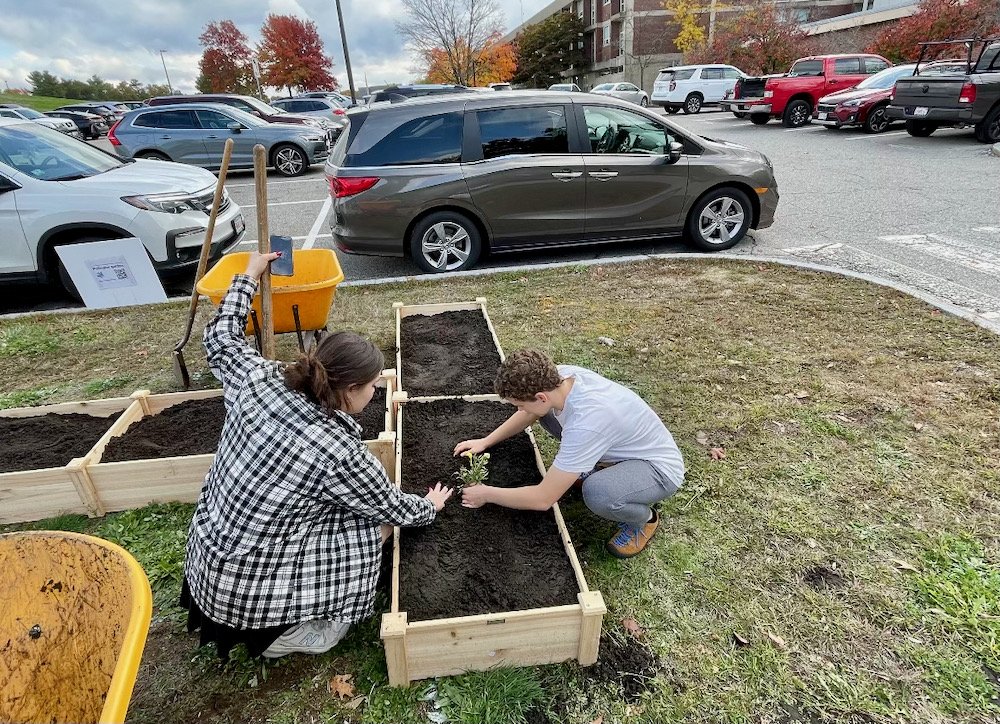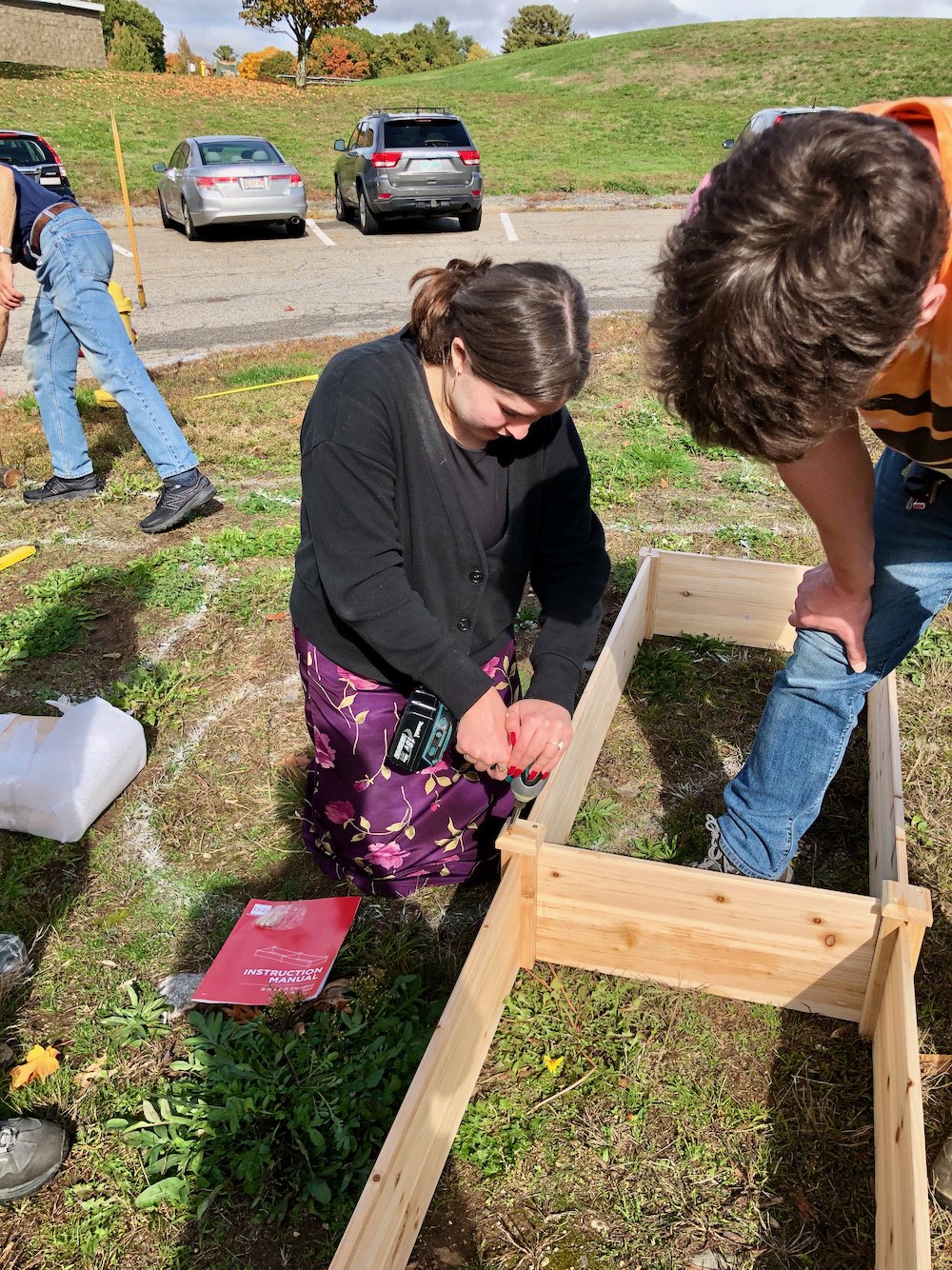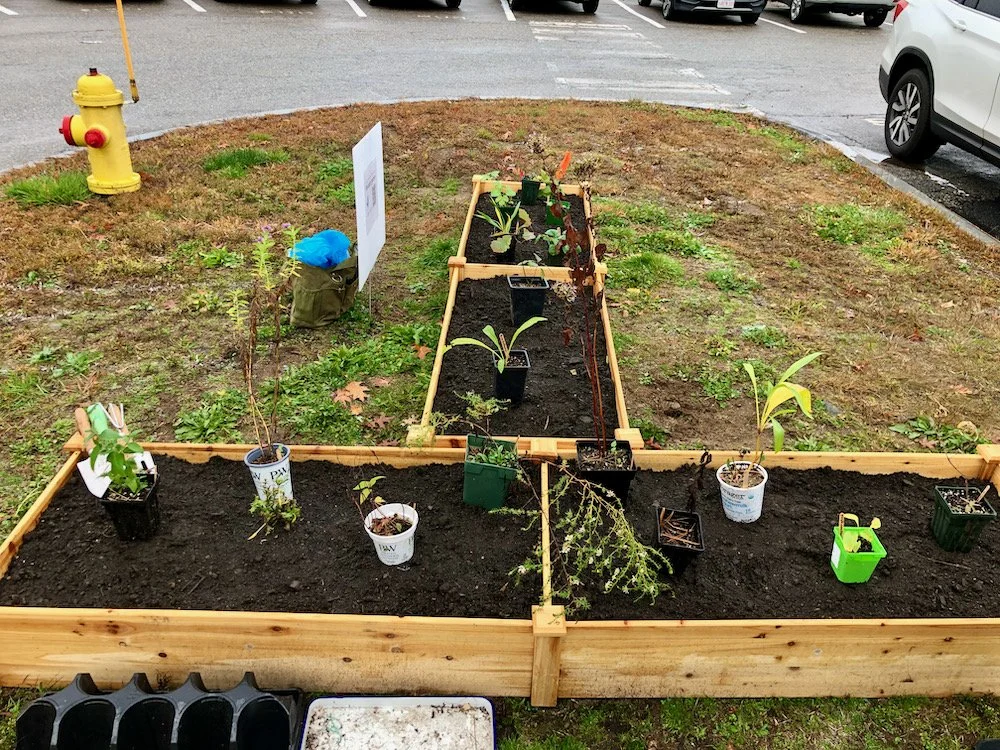AHS Environmental Interns Buzz About their Pollinator Pathway Project
By Grace, AHS Senior and WECAN intern
“We’re excited to create a pollinator garden at the Andover High School campus. Wildflowers are beautiful, enhance our environment, and provide a habitat for bees, butterflies, birds and other pollinators. It’s especially gratifying to see the results of our work and know that we’re making a difference,” said Isabelle Galgano, who works along with Grace Jungmann as environmental science interns with the Pollinator Pathway Project.
Isabelle and Grace created a pollinator garden on an island within the Collins Center parking lot. Since the soil was too compact for a garden, they filled raised beds with a compost and loam mixture (40% sand, 40% silt, and 20% clay) and planted flower seeds which the interns hope will thrive again next spring. The pollinator garden also creates a cheerful oasis in the parking lot and signals a brighter alternative.
Their work is in conjunction with the Pollinator Pathway Project, a grass-roots environmental campaign that coordinates volunteers from local conservation organizations to support and grow pollinator-friendly habitats and food sources for bees, butterflies, hummingbirds and other pollinating insects and wildlife along a series of continuous corridors. Most native bees have a range of about half a mile. The Pollinator Pathway Project wants to establish a thread of pollinator gardens spaced within that range, to create that continuous corridor.
Both seniors at Andover High School, Grace and Isabelle with their environmental internship advisor, Miranda Chave, help to promote and support pollinator species. Pollinators are bees, wasps, butterflies, moths—any species that drinks nectar. Pollinators travel among flowering plants and deposit pollen, which plants use to produce seeds. Many plants cannot reproduce without pollination.
According to the U.S. Department of Agriculture about 35% of the world’s food crops depend on animal pollinators to reproduce. That’s one out of every three bites of food you eat. More than 3,500 species of native bees help increase crop yields. Climate change, increased use of pesticides and herbicides, pollution, and urbanization add to the pressure on pollinator species, which are dying at alarming rates. Their decline could disrupt our food supply and alter ecosystems in unpredictable ways.
“It’s important to increase awareness of the critical role native pollinator plants play in maintaining a healthy environment. We commit significant resources to the care of green lawns, for example, which limit biodiversity and endanger ecosystems. Manicured lawns frequently rely on concentrated fertilizers, and the landscaping equipment requires enormous amounts of energy, increasing carbon emissions,” noted Grace Jungmann.
To learn more information about the Pollinator Pathways project and to keep up to date with their work, please follow the group’s Instagram page: @ahs.pollinatorpathways.
Isabelle Galgano and Grace Jungmann beginning to plant in their pollinator garden in the Collins Center Parking lot.
Environmental intern Isabelle Galgano building the foundation for her pollinator garden.
A full view of the pollinator garden.



